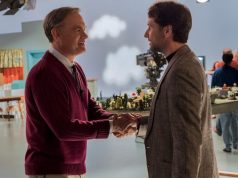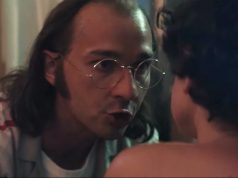The strange story related in the film “Blindness” is an allegory. It wears its allegoricalness on its sleeve, setting itself in an unnamed city with unnamed characters who experience unexplained oddities that would not occur in the real world. What does the allegory mean? I will leave that for you to determine — partly because I adhere to the Critics’ Code of not giving away the entire movie, and partly because I have no idea.
OK, I have some idea. The film, based on José Saramago’s Portuguese novel “Ensaio Sobre a Cegueira” (“Essay on Blindness”), addresses enough elements of society — government, racism, man’s basic selfishness, the breakdown of civility in a crisis — that it probably has multiple applications. It’s hard not to draw conclusions when, in a film about a blindness epidemic, someone says of the lone sighted person, “How lucky we are to have a leader with vision.”
“How lucky we are to have a leader with vision”! A line like that must be fraught with import.
That borderline-pretentious quasi-depth permeates the film, which was adapted by Canadian filmmaker Don McKellar (“Red Violin,” “Last Night”) and directed by Brazil’s Fernando Meirelles (“City of God,” “The Constant Gardener”). It walks the delicate line between vagueness that inspires thoughtful discussion and vagueness that inspires people to say, “That movie thinks it’s a lot deeper than it really is.”
I had the same reaction to it that I have to a lot of modern art: Huh. Interesting. I don’t know if I “get” it, but I’m glad I saw it.
So, yes: blindness epidemic. It comes on suddenly and completely, and turns everything in the victim’s view white rather than black. (The cinematographer, regular Meirelles collaborator Cesar Charlone, emphasizes this by bleaching most of the color from the picture.) The blindness is apparently contagious, though that is never confirmed medically — nor is anything else about it, actually, since the government’s immediate response is to quarantine the sufferers and ignore them, rather than trying to determine the causes.
A decommissioned sanatorium is the quarantine site, with soldiers stationed outside to prevent anyone from leaving. Apart from the occasional delivery of food, there is no contact between the blind and the rest of the world, and no access to first aid kits or other basic supplies. Since everyone is crammed into small facilities, and blind anyway, issues like privacy and modesty become moot. They have no access to laundry facilities, so they don’t worry about wearing much clothing. Hygiene goes out the window. The place quickly becomes a horrid, festering nightmare of filth and despair.
A doctor (Mark Ruffalo) becomes the de facto leader of one of the wards, trying to keep order in a rapidly deteriorating situation. His wife (Julianne Moore) has for some reason not been stricken with the blindness, but pretended to be so that she wouldn’t be separated from her husband. Her ability to see, which she must keep secret from the others, helps tremendously. How lucky we are to have a leader with vision!
The rest of the group is multi-ethnic, multi-national, and represents all ages: a Japanese man (Yusuke Iseya) and his wife (Yoshino Kimura), a Latina prostitute (Alica Braga), a young boy (Mitchell Nye), an older black man with an eye patch (Danny Glover), a Hispanic bartender (Gael Garcia Bernal), and, what do you know, a guy who’s been blind since birth (Maury Chaykin) and who’s therefore a little better at it than everyone else.
As a “Lord of the Flies”-meets-“Lost” scenario develops, the bartender decides that democratic socialism is no longer viable and institutes a monarchy, declaring himself King of Ward 3. He and his supporters seize control of the food supply and demand payment from everyone in exchange for dinner — first in the form of whatever jewelry they have on them, then in the form of sexual favors. He has acquired a gun, somehow, and everyone knows that whoever wields the weapons wields the power.
It is here that the film, already a visually ugly presentation — you’ve never seen movie stars photographed so unflatteringly — becomes thematically ugly, too. I don’t blame anyone for being turned off by the unpleasantness of it all, but I found the depiction of a total breakdown in society’s niceties compelling, harrowing, and fascinating.
What I wish is that it had gone somewhere in the end. What is the point of it all? What observations is the film making, other than the obvious “people go to pieces when the rules disappear”? The performances, especially Moore’s, are sharp, but they never really rise above the anonymity of the characters or the weirdness of their situation.
B (2 hrs.; )





